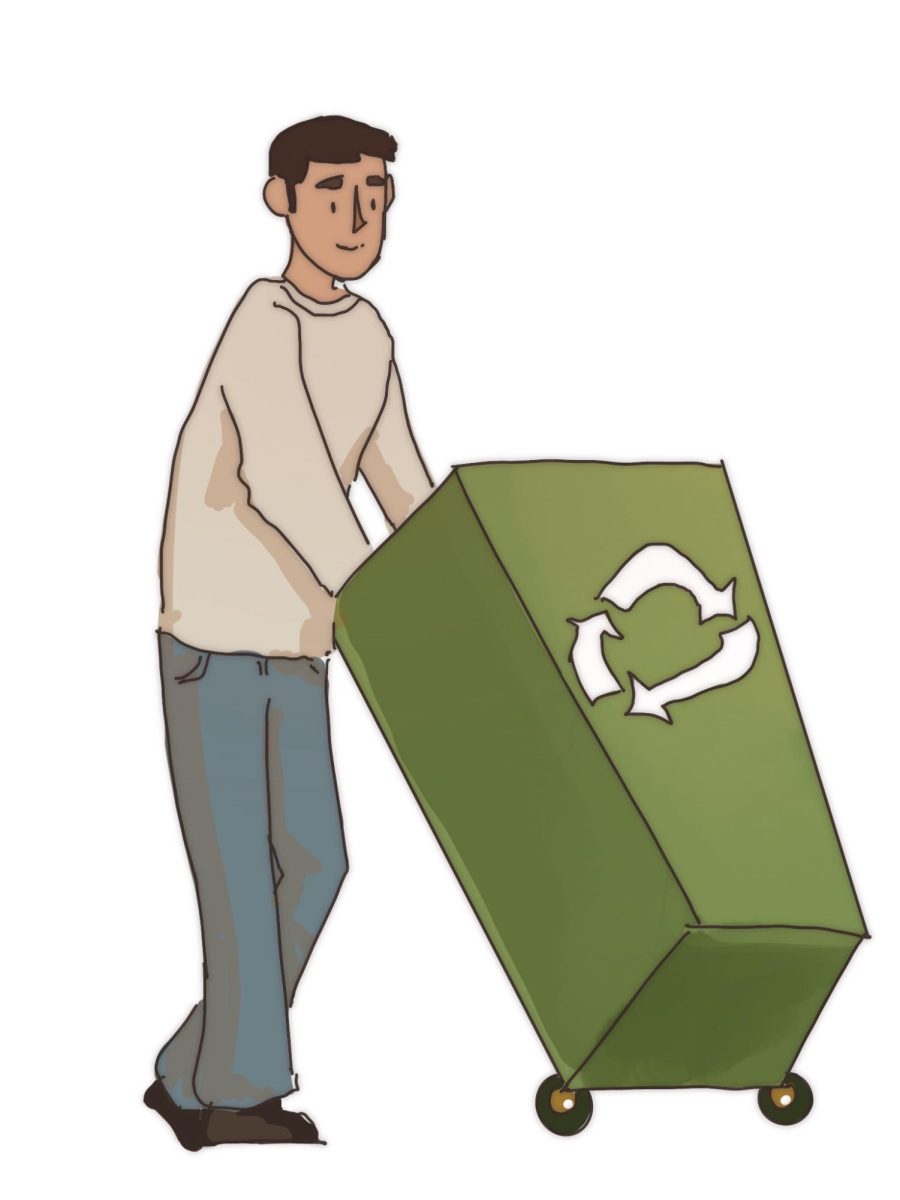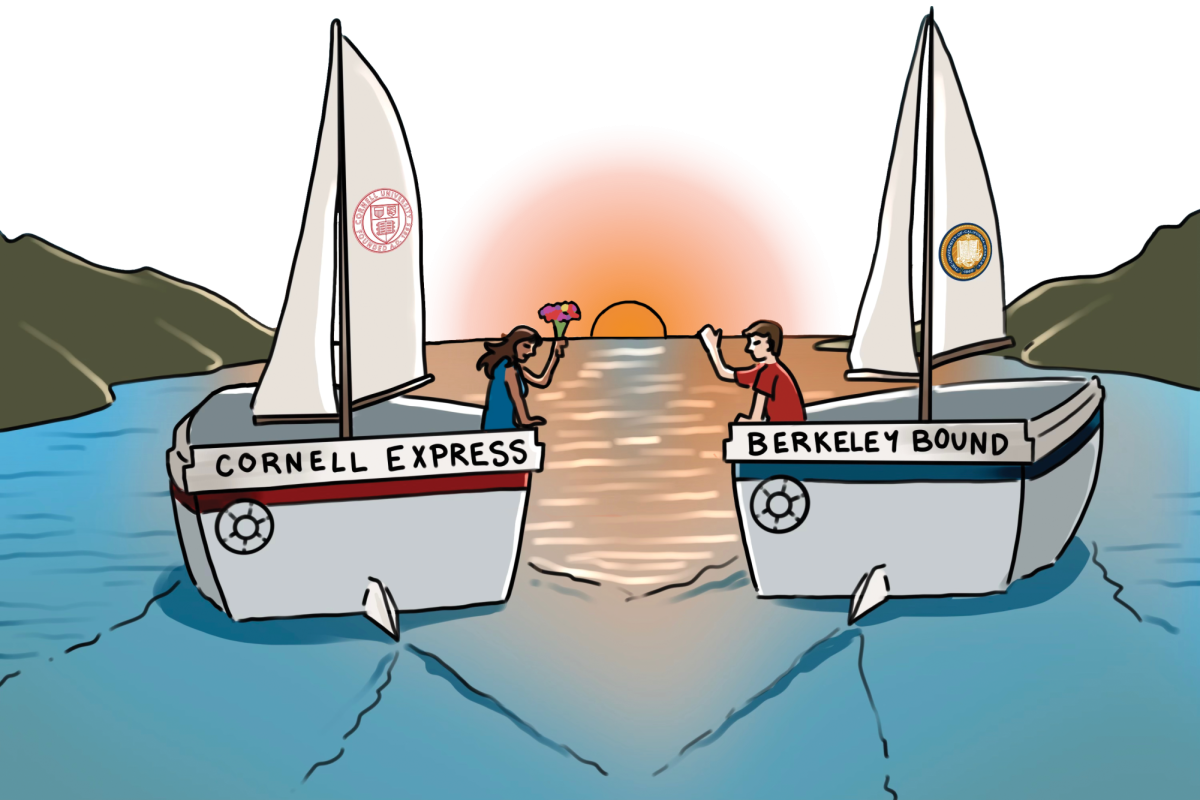As Senior Prefect Elizabeth Johnstone ’24 walked into a meeting with members of the administration, she was determined to voice her concerns about the school’s sustainability. However, Johnstone said she found the school had to prioritize other, more pressing issues.
“It’s tough to pick and choose where our energy gets focused,” Johnstone said. “Especially given the awful year we had last year, mental health had to be at the forefront of this year’s policy. In 2020 and 2018, Diversity, Equity and Inclusion (DEI) was at the forefront of training. Institutional change and priorities end up being a zero-sum game with time, resources, money and energy. I don’t want to say [environmental policy] is not a priority of the administration, but it might take a bit of time before it gets up there.”
In late August, Hurricane Hilary hit the coast of California, flooding freeways, toppling trees and causing mudslides. Members of the community were relieved the storms dissipated before the start of school, but a greater root cause of the problem remains unresolved – climate change.
July 2023 was recorded to have the highest global average temperature in the past 120,000 years, 1.5 degrees Celsius warmer than the average for pre-industrial times, according to the World Meteorological Organization (WMO). Long-term climate change and increasing temperatures are not only responsible for the warm waters and ocean heat that resulted in Hurricane Hilary, but also for future extreme weather events that could doom humanity to global biodiversity loss, financial crises and existential resource conflicts, according to the Guardian.
With the continual escalation of climate change, the Environmental Club has become increasingly alert about the school’s impact on the environment. Environmental Club leader Elizabeth Johnstone ’24 said although few policies have been implemented, the club has initiated discussions with the administration.
“Last year, I had some discussions with some people in [administration] about making our upper school campus more sustainable and bringing it up to speed with the great sustainability work at River Park,” Johnstone said. “However, they have only been conversations. Hopefully, in the next couple months or next semester, we [can] bring those conversations into action.”
Chief Financial Officer David Weil ’93 said the school has to prioritize its main objectives before tackling environmental concerns.
“The most important things that any school needs to provide is a safe and welcoming environment, an opportunity for students to be challenged, physically and mentally, to find their passion and to begin to understand themselves,” Weil said. “Those are fundamental goals of any school. Once those have been established and are being addressed appropriately, then there are important complementary initiatives and environmental sustainability is one of them.”
Science Teacher Ryan Ellingson said while he understands that implementing sustainable practices may be difficult, the school should still make meaningful changes.
“It’s hard to accept the reality of a problem far bigger than any one person,” Ellingson said. “Unfortunately, environmental crises are all around us and we can’t afford to keep looking the other way. Climate change is already here and it’s rapidly accelerating. I understand big changes must be made carefully and logistics can get complicated, but Harvard-Westlake lags behind many school districts and colleges that have made sustainable campuses and curricula much bigger priorities. Institutional change at Harvard-Westlake is needed soon, and overcoming community apathy has to be part of that change.”
Ellingson said all members of the community have a responsibility to advocate for sustainability improvements.
“I am confident that when meaningful changes come from the top, students and the rest of the community will embrace it,” Ellingson said. “It is also true that top decision makers will make changes more quickly if the community demands them, so it is likely that students, alumni, and even teachers can have a much bigger positive impact than they may realize. None of our individual goals will matter if humans continue to degrade our shared environment by burning fossil fuels, deforesting wilderness, and overconsuming. Harvard-Westlake cannot save the world, but going about our business as if these environmental crises don’t exist does a disservice to our students and to the greater community beyond ourselves.”
Weil said although the administration may seem unconcerned with the environment, it certainly will take opportunities for greater sustainability..
“We may not be proceeding at the pace that everybody’s comfortable with or what everybody would like to see when it comes to our sustainability initiatives,” Weil said. “I fully grant that, but we certainly do what we can when we can.”
Over the past years, the school has converted almost the entirety of both the upper school and middle school campuses to have light-emitting diode (LED) fixtures, according to Weil. Weil said that converting to LED fixtures does not produce a direct financial benefit and the school made the decision to implement them because of their environmental benefit.
Johnstone said the age of the upper school infrastructure makes it difficult for the school to emphasize sustainability.
“Our upper school campus is over a century old,” Johnstone said. “We’re playing catch up with common sense environmental policies that were developed at the latter end of the 20th century. It’s easier for a new facility like River Park to be built up to [environmentally-friendly] standards, as opposed to renovating our Coldwater campus. It’s really difficult, so I see how the administration is in a pickle there.”
Despite these difficulties, the school has worked with students and faculty to make strides towards sustainability. Ellingson said he noticed recent changes like drought-tolerant landscaping next to the north driveway. Ellingson also said he appreciates that in the short time he has worked at the school, the cafeteria has worked in conjunction with the Environmental Club to replace plastic utensils with compostable utensils, stop selling plastic water bottles and offer more meatless options.
“It’s my understanding that the Environmental Club requested many of these positive changes and the cafeteria staff deserves credit for responding to students’ concerns,” Ellingson said.
Like Ellingson, Science teacher Nadine Eisenkolb said that a past student-led effort towards environmental sustainability was realized by the administration.
“One of the things spearheaded in the past was when a student was really interested in hydroponics,” Eisenkolb said. “They were growing a lot of vegetables and herbs at home, and they asked the school whether we could have a hydroponic system here on campus. They approached the Learning Center and were incredibly excited about picking food that we could use on campus and teaching people where our food comes from. Later, the school purchased three hydroponic towers, and we worked with both the maintenance team, who set up the electricity, and the administration, who paid. Even though that student has gone off to graduate, we still use the hydroponic system in my Directed Study class. That was an entirely student-led effort.”
Johnstone said a full-time position dedicated to environmental policy would be vital to prioritizing sustainability.
“The real way to get something done is to put it on the payroll,” Johnstone said. “I think there should be a director of sustainability at our school, that’s not a part-time job split with being a teacher. Students can be the ones pushing for them and trying to help the administration find solutions, but to really prioritize these issues, you’ve got to have someone who’s doing it full time.”
Johnstone said while administrative power may be limited, environmental solutions can still be woven into current policies such as diversity, equity and inclusion.
“I think we should reframe environmentalism as an intersectional discipline,” Johnstone said. “There’s tons of scholarship, decades old, which shows black and brown populations, socioeconomically disadvantaged [populations] and neighborhoods historically redlined all suffer the most from environmental degradation. When we think about [environmental policy] like that, it’s not necessarily a question of which issue we are fighting for, because we can incorporate [environmentalism] into the other disciplines we already prioritize.”




























